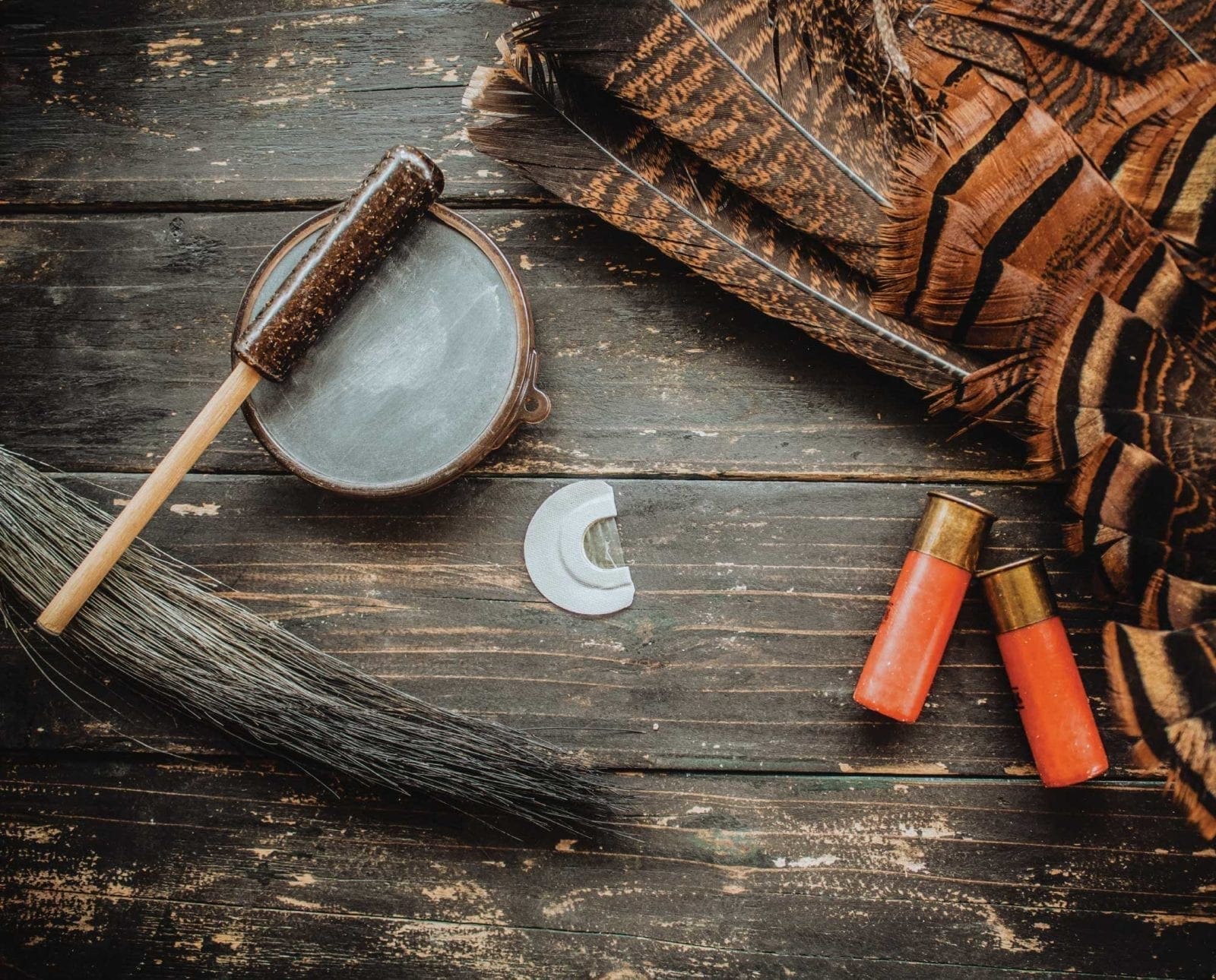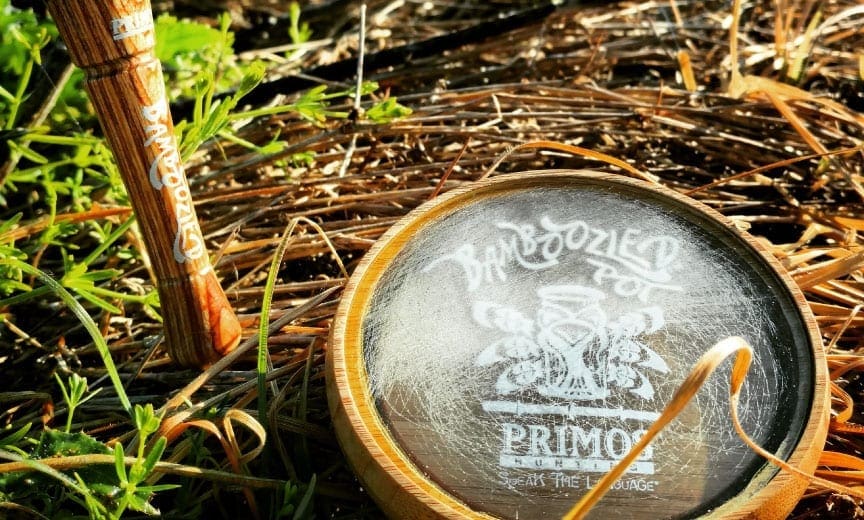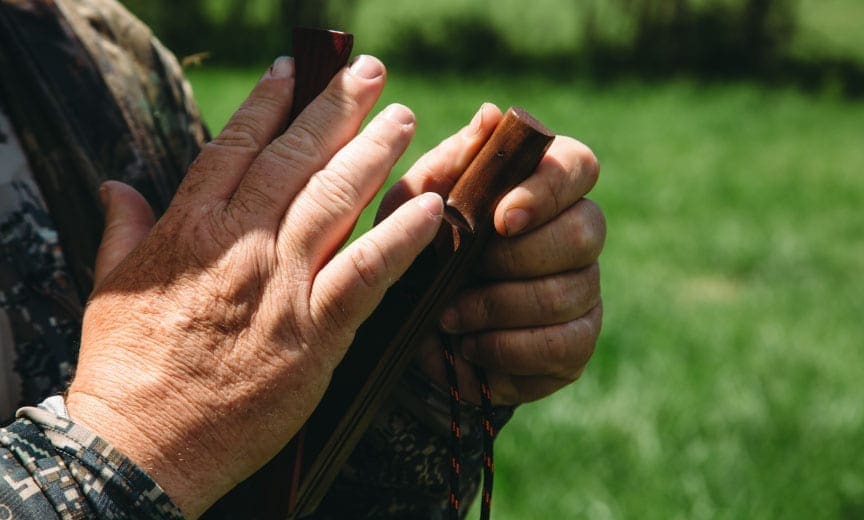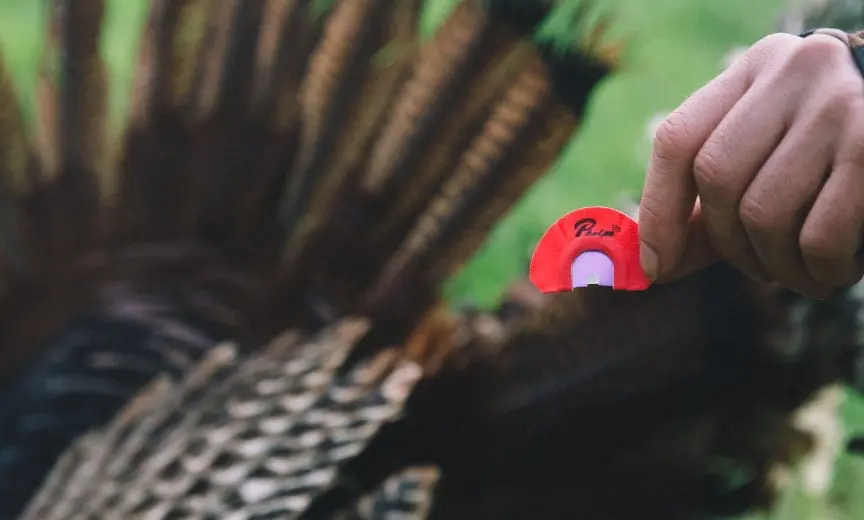Home » Turkey Hunting » The Basics of Turkey Calls and Their History
The Basics of Turkey Calls and Their History

Matt Breuer has been working in the outdoor industry for…
Take a journey through the types of turkey calls and applications from indigenous history to modern times
Like many tools used in modern times, the turkey call was crafted by indigenous people thousands of years ago. Early “trumpet” or “wing bone” calls were crafted from turkey wing bones or antlers. While some controversy exists around the date of the original turkey call, one turkey wingbone call sits in the National Wild Turkey Federation’s museum that is verified to be 4,000 years old. Mull that over for a second.
While things have changed a lot over the course of 4,000 years, a lot has stayed the same. Hundreds of call-makers produce thousands of calls each year, and they vary in size, shape, materials, mechanics, and sounds. Below we’ll discuss the types of calls out there, and how each works in different situations. While there may be a lot of options, we’re all still trying to accomplish what the indigenous people were doing 4,000 years ago: to sound like a turkey.
Do not let this all intimidate you as even bad callers can get a turkey!
Wing-bone turkey calls
We should start from the beginning. As stated, wing bone calls, also called trumpets, were and still are crafted from turkey wing bones. After killing a turkey, the radius, ulna, and humerus bones are all taken off, all marrow is removed, and the bones are boiled and cleaned. Inserting the smaller radius into the edge of the larger ulna creates a double-wing bone. Insert those into the larger humerus bone, and you’ve got a triple wing bone.
Imagine a semi-rugged and jagged trumpet. Wing bones from toms will produce deeper and raspier sounds than the bones from jakes or hens. The bones from a jenny will give you high-pitched crisp sounds. Having a few of these calls available allowed the Native Americans to achieve different sounds, enticing wary gobblers. Sounds are made by putting your lips on the smallest edge of the call and sucking air through it. Tighter lips will produce higher pitched sounds, while opening your lips will give you deeper tones. The wing bone is said to achieve the greatest calling distance of all available calls on the market.
While wing bone calls are a rarity these days, there are still call-makers out there that specialize in them. If you’re feeling nostalgic, I suggest that you look up information on making your own and try your hand at making one — if even to have as a decoration.
Push-pull turkey calls
From tricky and nostalgic, to extremely simple: the push or push-pull calls are simple calls that utilize friction to produce sounds. Pushing or pulling on a “button” makes a flat surface scrape against a striking surface. The striking surface is usually cedar, mahogany, walnut, or plastic. Push-pull calls are the easiest of all calls to master, and can make a wide variety of sounds; from simple yelps to cuts and purrs. Some manufacturers have even created models that attach to your gun, reducing movement.
Push-pull calls aren’t the loudest, and they don’t have the ability to vary tones without moving from one call to the next. They also do not perform well in humidity or moisture. If you’re in an arid area, push-pull calls can excel, but if you’re hunting in humid area or on a rainy day, leave the push-pull call at home. This is a great choice for kids and beginners.
Turkey pot calls
Pot or “slate” calls are probably the most common of all turkey calls. Relatively easy to use, a pot call can be very effective. Pot calls are usually round pieces of wood or plastic with a filling flat surfaced chunk of slate, glass, crystal, or aluminum. Sounds are made by moving a peg or striker across the surface, causing friction. The sound resonates in the chamber and out of the bottom of the call. With a wide variety of surfaces and the fact that no striker sounds the same, pot calls can really be fine-tuned. Often, striking the center of a pot call produces deeper tones, while striking the outer edges produces louder, high-pitched tones. The fact that there are so many options and so much surface area to play with make pot calls great for everyone from beginner to seasoned turkey hunter.

One thing to note about pot calls is that they need to be “conditioned.” Roughing up the surface allows for more friction and better sounds. The pot call is another arid-friendly call. Though some manufacturers are making pot calls designed to still work in humid or wet conditions, most will fail.
Turkey tube calls
Probably the most under-utilized but most effective call around is the tube. Tube calls consist of a small hollow barrel with latex fixed across half of the opening with a band. Making a sound with a tube is simple; put your mouth against the latex and push air through the opening. Putting more pressure on the latex will create higher-pitched tones, while relaxing on the latex will give you the deeper tones. Tubes can make virtually any sound that a turkey can, and veteran tube callers are some of the best in the world. From clucks and purrs to cackles and gobbles, the tube call can do it all. Tubes can work for beginners, but a lot of practice is required to get the most out of a tube call and to create consistent sounds.
Tubes can be very loud, and very soft. They are a versatile call that works in any weather condition. The only thing to keep in mind is that the latex will break after using the tube over a long period of time. Be sure to have spare latex and bands in your vest.
Turkey box calls
Another popular call for every turkey hunter is the box call. A long, hollowed out box made of wood or plastic with a lid that swings from a pivot point is the basic construction of a box call. Sounds come from scraping or striking the lid against the top edge or edges of the box. The sound resonates in the hollow chamber and bursts out with authority. Box calls are quite loud and are typically used as locator calls; these can work very well on windy days. Box calls are simple to use, but again, take time and patience to really master. Some of the better box callers out there can really very their tones by adjusting the angle of the lid or “paddle”, which puts out different tones and pitches.

The box call is another semi-fair-weather call. Humidity and rain can cause issues with any sort of friction call and wood surface. Since most box calls are cedar or mahogany, they fall prone to failing in wet conditions. Be sure to carry something to rough up the edges and/or chalk to keep the call running smoothly. A dry, unconditioned box call can sound like fingernails on a chalkboard if you don’t care for it.
Diaphragm turkey calls
A diaphragm or mouth call is a very affordable and compact choice. The fact that any sound with great range and precision can be made on a mouth call makes them popular. They are also hands-free, which is a great benefit if you are trying to finish a bird that is in eyeshot. Mouth calls are made by stretching latex across a horseshoe-shaped space in an aluminum frame, and then the frame is cinched to hold the latex in place. Small cuts are made in the latex for people with different airflows and to produce different sounds. Tape is put over the frame and cut to shape perfectly against the roof of the caller’s mouth. Sounds are made by applying pressure on the latex or reeds with your tongue, and blowing air across the reeds. Loud, soft, high, low, raspy, clean . . . the mouth call can do it all.

One downfall to mouth calling with a diaphragm is that it takes some time to master. A lot of time. Years of practice are needed to master the basic sounds, and more years are needed to add small sounds that add realism, like kee-kees, pips, and whines. One can even gobble with a mouth call if they are good enough. Don’t think that you can’t pick one up and make turkey sounds, because you can. It just takes practice to really fine-tune your mouth calling skills.
Which one is right for you
When I got into turkey hunting, I asked my dad to buy me a variety of calls. After a couple of years, I had a large assortment. It wasn’t until I was about 30 years old that I finally found the right calls for me and felt comfortable with everything in my arsenal. Some people pick up a mouth call and make a perfect yelp on the first try. There’s no right answer, because everyone is so different and people hunt so many different areas. In the mountains, I love a loud, raspy call. In the open country, I prefer cleaner sounds with a variety of tones and volumes. Some places I hunt, I may only take one call, and other places I hunt I won’t enter without a box, a slate, and my mouth call.
Try a wide variety, and don’t give up. One day, you’ll make that perfect sound, and you’ll be hooked.
Matt Breuer has been working in the outdoor industry for over 15 years, guiding, writing, promoting, volunteering, and working with several conservation groups. He’s on the Board of Directors of the MN Sharp-tailed Grouse Society, and is a recruitment and retention coordinator with RGS. He owns and operates Northcountry Guide Service & Promotions in northern MN. Link up with Matt by visiting www.northcountryguides.com .





A 4000 year old Wing bone turkey call, I recently attended a primitive game call course and made several turkey calls, Turtle shell and wing bone, While its a fact that Indians were using these calls as several noted people have shown ( Dr Frank Speck) I have been unable to verify any turkey call over 150 years old, Tennessee’s, Eva site, the Fewkes group site, while they both definitely have the remains of large deposits of turkey bones, 6500 BC, No comments from several archeologist (Fla State) have claimed a probable use other then a tatto set, food and feathers. The bones I see from these site some could have been used as turkey calls, Its still a leap of the faith to say definitely they are turkey calls rather then just bones. Danny Ellis is a turkey call collector near me, He has a piece reported to be a turkey call 6500 years old. His words not mine, (there is no provenance to it being a turkey call or just a mere turkey bone) Have you any leads? Its a interesting subject, Fact or Legend.